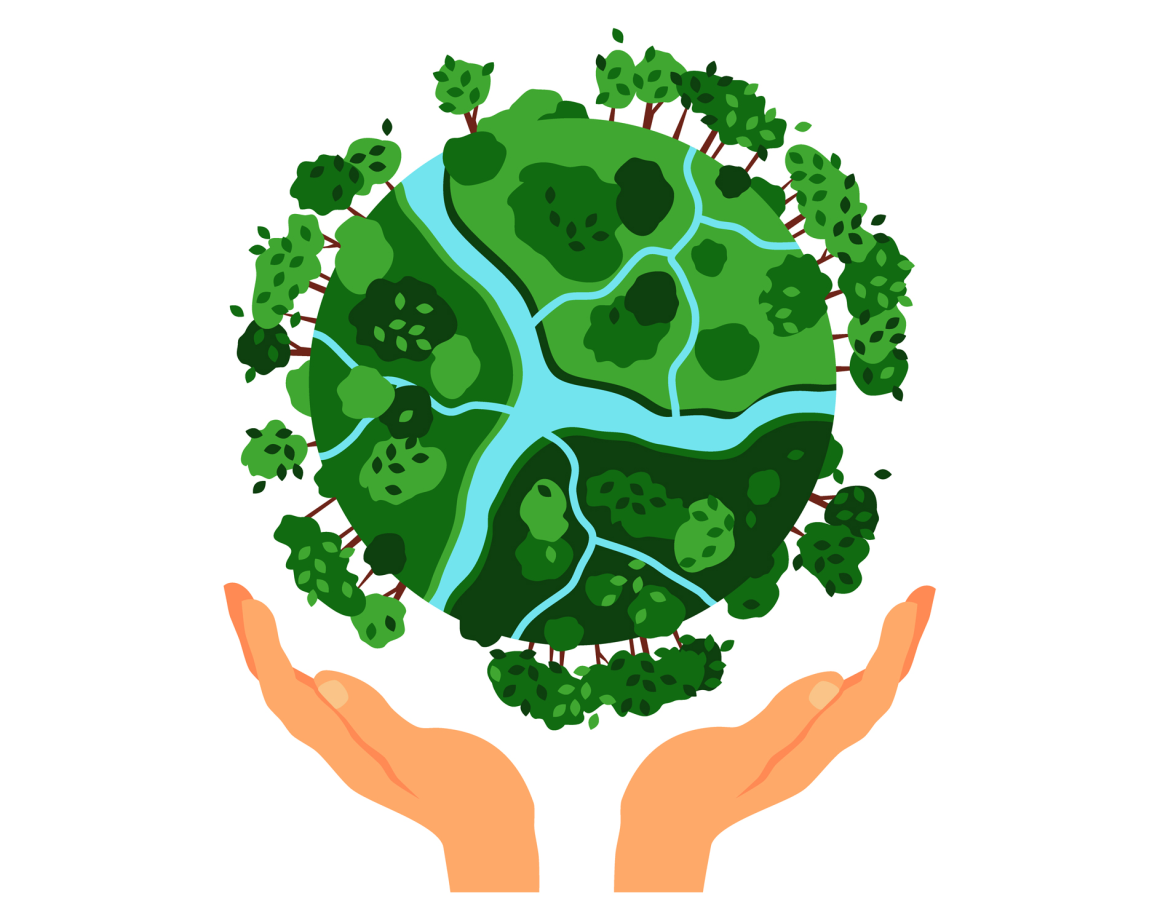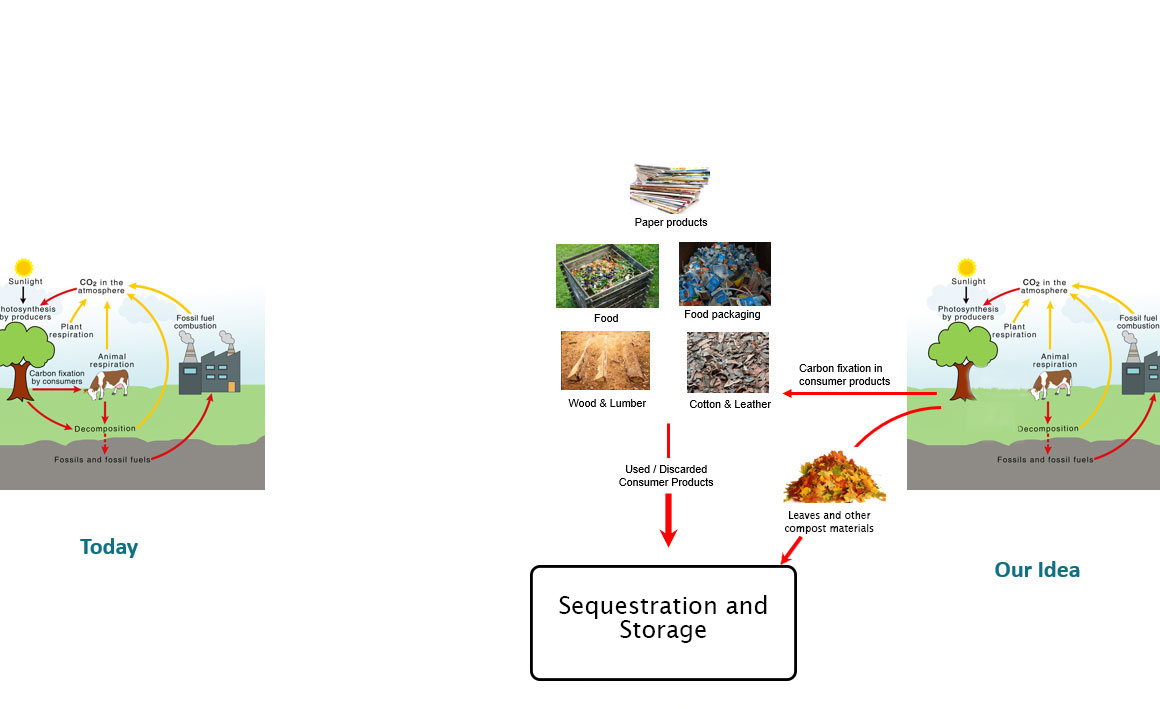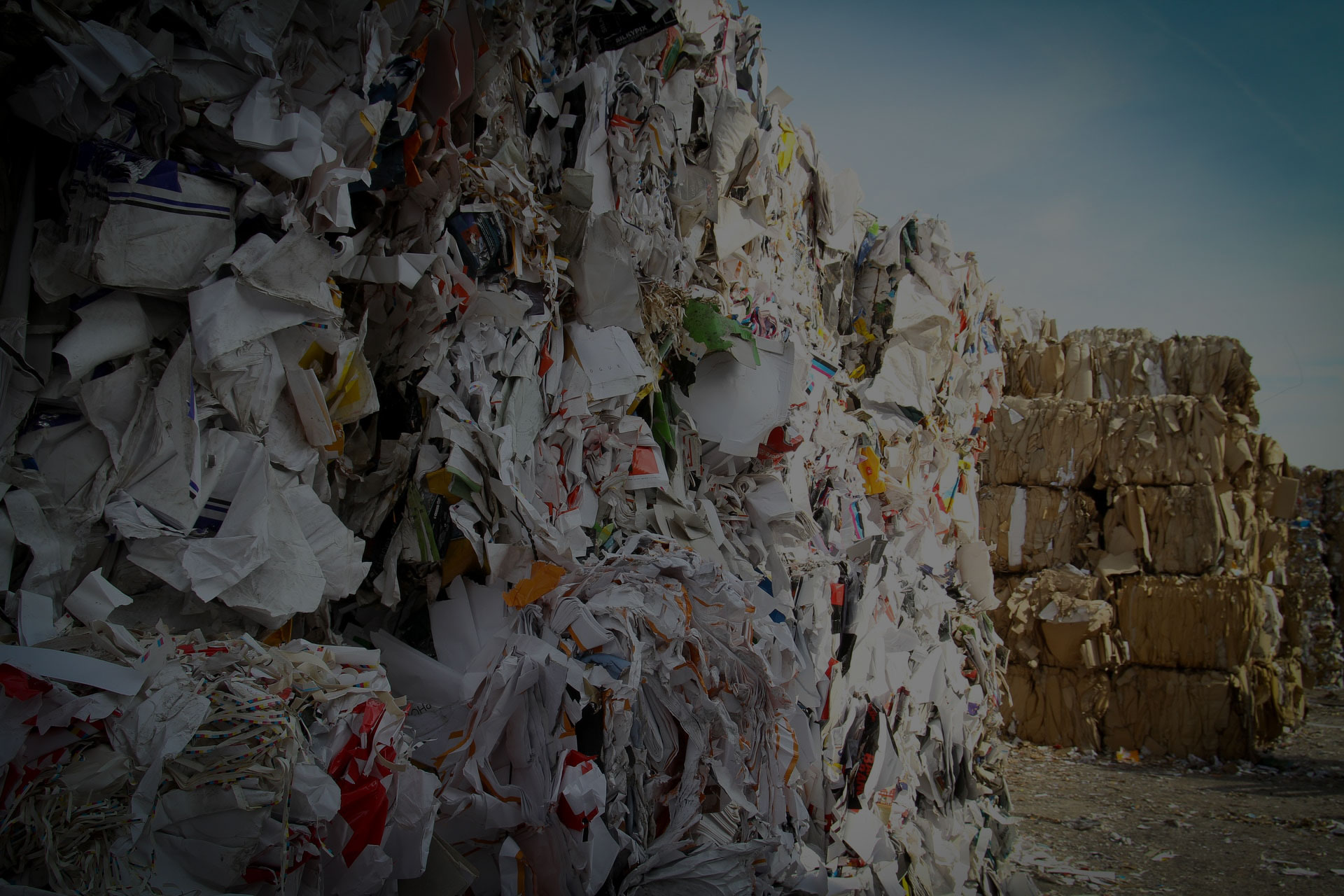
The Issues
No one is using plants to capture carbon as part of their Carbon Capture and Sequestration (CC&S) processes.
No one is researching ways to sequester plants directly.
The industry needs to expand the fundamental way we think about how to capture and sequester carbon from the atmosphere.
The world needs a solution for carbon capture and sequestration that is ready now, not after 10 years of technical and economic improvements.
Our Big Idea
We take a different approach. We use plants to capture the CO2.
Our research is focused on how to sequester plant material (biomass), focusing on residual and waste biomass
We have discovered a method to stop all biochemical degradation thus keeping the carbon in a form that does not let it return to the atmosphere- sequestration
Our technology creates and maintains an environment in which all of the microorganisms are dormant. The bacteria are there, but no biochemical reactions can take place in the environment we create.
We have a patented technology that can sequester carbon that has been captured naturally for under $50/ton.

WE WANT TO BE THE FIRST COMPANY TO REACH THE GOAL OF REMOVING 1 BILLION TONS OF CO2 PER YEAR FROM THE ATMOSPHERE
Why do we think we can make that goal?
-
Economic
Cost of Carbon Capture $0/ton. We only use waste products. No new trees have to be planted to reach our goal.
-
Applying the Technology
90% of the infrastructure needed to apply our first technology (Patent # 11359862) is already in place worldwide.
State of the Art
Every year billions of tons of Carbon are returned to the atmosphere that were captured by plants
Currently the only acceptable methods for dealing with carbon that has been captured by plants is some recycling for paper but the rest is BURN, BURY or COMPOST
While there are many reasons to use these processes, they all end with the captured carbon being turned into CH4 and/or CO2 and returned to the atmosphere
Our Technology – redirects these billions of tons to sequestration, completing the process of Carbon Capture and Sequestration
The majority of current research is based upon using mechanical scrubbers to capture the carbon and then employ hundreds of miles of CO2 pipelines and deep well injection to sequester and store the captured carbon

How does it work?

Waste Paper will be the First Application
Paper is naturally dry
Recycle Programs around the world already separate paper from ‘wet’ garbage
Approximately ⅓ to ½ of the paper collected ends up in landfills due to limited market for recycled paper
Hundreds of Millions of Tons of Paper already collected and available for sequestration

Beyond Paper

Coated Paper
Coated paper currently is unable to be recycled, our methodology alleviates that challenge.
Coated paper (milk cartons etc.) can be included in our process with no pretreatment required

Food packaging
The use of plastic packaging for food products contributes significantly to plastic waste, of which 14 million tons end up in our oceans each year.
Food packaging that is constructed of paper can be included even if it has come into direct contact with the food

Leaves
Leaves and other yard debris account for more than 13 percent of the nation’s solid waste— 33 million tons a year.

Cotton/ Leather Products
The Average US Consumer Throws Away 81.5lbs of Clothes Every Year. In America alone, an estimated 11.3 million tons of textile waste – equivalent to 85% of all textiles – end up in landfills on a yearly basis.

Wood Products
The total amount of wood in MSW that was combusted in 2018 was 2.8 million tons. This was 8.2 percent of MSW combusted with energy recovery that year. In 2018, landfills received 12.2 million tons of wood.

Waste Food
Each year, 108 billion pounds of food is wasted in the United States.
Two Example
- Liquid wastes –…liquid stream (manure from animal feed lots)
- Plastics – make technique plural techniques.
Other technologies that we are working on that can take naturally captured carbon and sequester it
Examples
Total Garbage – technique that can take the entire solid waste stream and sequester the carbon in it without separating it into wet and dry components
Liquid Wastes – technique that can sequester captured carbon that is in a liquid stream
Plastics – technique that can make plastics part of the solution not part of the problem




